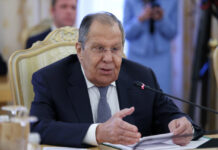
The Trump administration on Wednesday froze government-imposed flight cuts at 6% across 40 major U.S. airports, citing a sharp drop in air traffic control absences and signs of stabilization in the aviation system.
The move came just hours before President Donald Trump signed legislation to end the record-breaking 43-day government shutdown.
The Federal Aviation Administration (FAA) had initially ordered 8% and 10% cuts for Thursday and Friday, respectively, due to widespread staffing shortages caused by unpaid controllers missing work.
However, with absences falling significantly in recent days, the agency scaled back its planned restrictions.
“The 6% hold will remain in place as the FAA continues to assess whether the system can gradually return to normal operations,” the agency said in a statement.
Flight disruptions eased markedly, with U.S. airlines canceling about 900 flights on Wednesday, the fewest in nearly a week, according to flight-tracking service FlightAware. Total delays fell to around 2,000, down from 4,000 on Tuesday and nearly 10,000 on Monday.
Air traffic controller absences now account for only 1% of total delays, compared to 5% before the shutdown, the FAA reported. Still, the agency remains about 3,500 controllers short of optimal staffing levels.
Many controllers had been working six-day weeks and mandatory overtime even before the shutdown forced them to work without pay.
Transportation Secretary Sean Duffy said the FAA would cautiously proceed toward normal operations. “If the FAA safety team determines the trend lines are moving in the right direction, we’ll put forward a path to resume normal operation,” Duffy said.
Major airlines expressed optimism that flight schedules could normalize soon after the shutdown’s formal end.
“Once the shutdown ends, we’re optimistic that the FAA will allow airlines to resume normal operations within a few days,” said Southwest Airlines Chief Operating Officer Andrew Watterson in a message to employees.
Delta Air Lines CEO Ed Bastian told CNBC that he expects the aviation system to be “largely back to normal” by the weekend, though he warned that the cancellations and delays have already caused “significant” financial losses for both airlines and the broader economy.
Since October 1, when the shutdown began, air traffic control absences have triggered tens of thousands of cancellations and delays, disrupting travel for millions. Last weekend alone, about 1.2 million passengers were affected as controllers struggled to cover shifts, with some forced to take second jobs or unable to afford child care.
Duffy announced that air traffic controllers will receive 70% of their back pay within 48 hours of the shutdown’s conclusion.
Meanwhile, a U.S. Senate subcommittee is scheduled to hold a hearing next Wednesday to examine the shutdown’s impact on aviation safety and operations.
With flight operations steadily improving and the government reopening, industry officials hope to see the U.S. aviation system fully stabilized within days, restoring confidence to millions of travelers ahead of the busy holiday travel season.
Source: Reuters
Written By Rodney Mbua


















